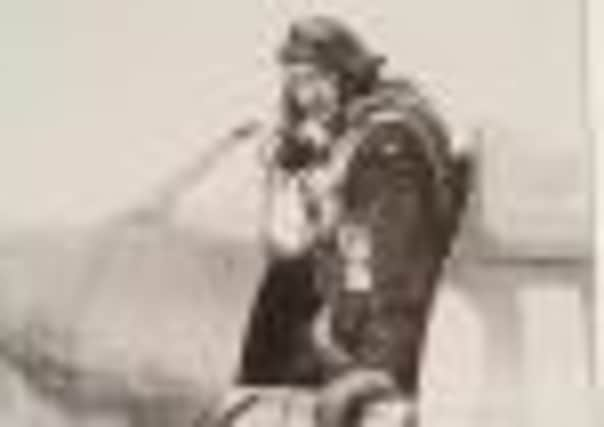World War II pilot Sir Alan Smith dies aged 95


Sir Alan flew many missions behind Britain’s most famous RAF man, protecting him from enemy fire.
The pilot, who was personally selected by Bader to fly with him, was awarded the Distinguished Flying Cross in 1941 and a Bar the following year.
Advertisement
Hide AdAdvertisement
Hide AdBader was shot down and captured by enemy troops on his first mission without Sir Alan, who had been grounded due to a bout of flu.
Bader, who famously lost both his legs in a pre-war air accident, was held as a prisoner of war until the conflict’s end, although he made a number of escape attempts.
Sir Alan did not fall into the hands of the Germans and retired from the RAF in 1945 with more than 1,500 flying hours.
After the war, he settled in Kinross-shire to teach pilots and became active in the community. He chaired the Tay Foundation, securing long-term leases on salmon nets in the river estuary. Sir Alan was knighted in 1982. He died in Perth Royal Infirmary on 1 March.
He was born in South Shields in March 1917, the youngest of four sons born to Captain Alfred Smith and his wife Lilian. The couple also had an adopted daughter.
He dropped out of school at the age of 14 to help his mother after his father was lost at sea. After just a year working with her in her ironmongery store, he set up his own business selling sweets and tobacco.
Just before the start of the war, Sir Alan joined the RAF Voluntary Reserve and qualified to fly Tiger Moths.
He was called up to full-time duty with just 14 hours’ experience in the air and was flying Spitfires within the year.
Advertisement
Hide AdAdvertisement
Hide AdSir Alan later described his introduction to the iconic flying machine. He said: “The instructor merely pointed out the various levers, patted me on the back and said, ‘Best of luck’.”
He transferred to Tangmere just one month before Bader arrived to take command of the wing, and was personally selected by the flying ace to protect him from enemy aircraft.
Sir Alan said: “He came into the dispersal hut, got his eyes on me and said, ‘What’s your name?’ ‘Smith, sir’, I said. ‘Right you’ll do. Fly as my number two and God help you if you let any Hun get on my tail’.”
Sir Alan did his duty until 9 August 1941, when he was ordered to remain on the ground after falling ill. That day, Bader was forced to bale out of his plane over France and spent the next few years infuriating the Nazis with his repeated escapes and recapture.
In November of that year, Sir Alan was posted to Balado aerodrome to train new pilots.
It was while he was in the area that he met local woman Margaret Todd who was working for the Women’s Voluntary Service, and the couple married in Kinross in July 1943. They went on to have two daughters and three sons between 1945 and 1959.
After the war ended, Sir Alan began working for his father-in-law Herbert Todd at the local woollen mill, Todd and Duncan Ltd. Under Sir Alan’s management, the company evolved into Dawson International Ltd.
His youngest son, Stuart, said that his father put his longevity down to hard work, self-discipline and a healthy lifestyle. He said that what he most admired about his father was his generosity, fairness and integrity.